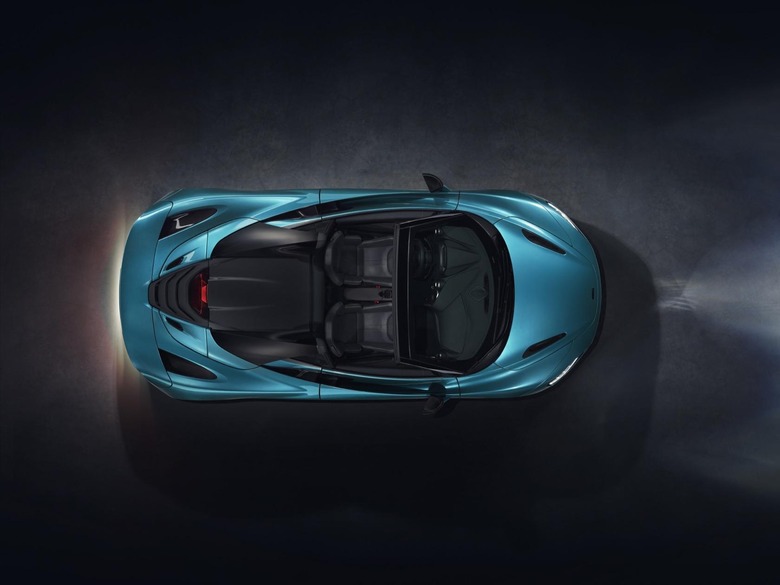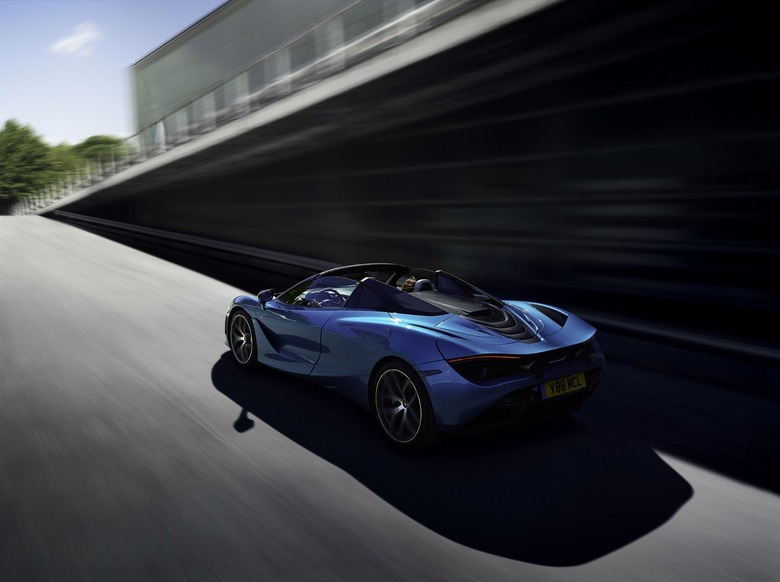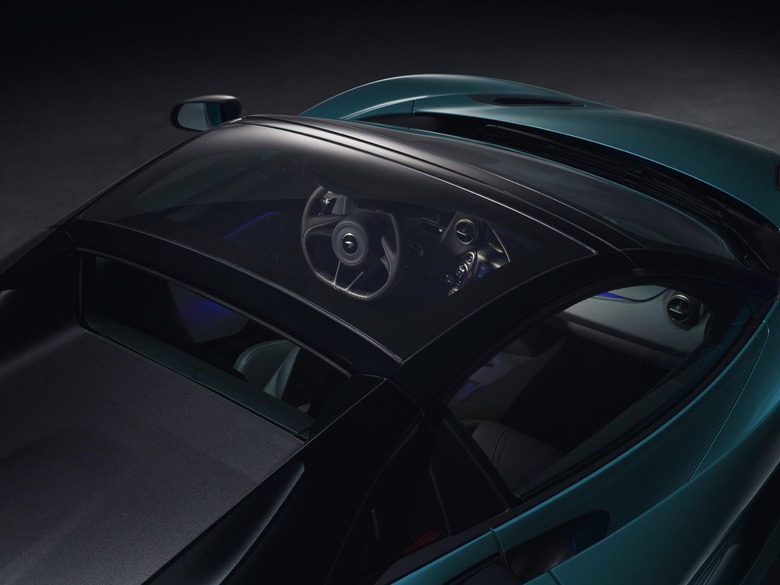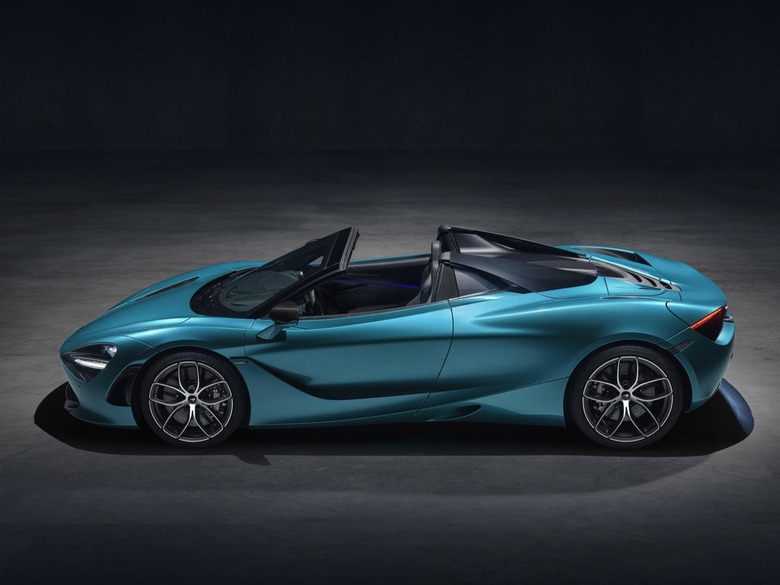5 ways the McLaren 720S Spider is supercar royalty
The sun-loving supercar buyer has a new toy to consider, and the McLaren 720S Spider makes a very strong pitch as to why it should be your summer fling. Second derivative of the fearsome 720S Coupe, the convertible promises just as aggressive performance but with the open-top enjoyment that only slicing off the roof can bring. Being a McLaren, of course, the 720S Spider hasn't done things the obvious way.
The 720S Spider still looks like a road-going spaceship
McLaren's design language continues to push the form-follows-function approach, though that doesn't mean the new 720S Spider looks dull. In fact, despite the changes to the roof, the Spider looks little different to its 720S Coupe sibling, which is probably no bad thing.

That means features like the headlamps which also double as air-intakes are present and correct, as are the deeply sculpted sides. Importantly, McLaren needed to add no extra stiffening or structural support versus the Coupe. That's because the automaker's carbon fiber core was designed with both closed and open versions in mind from the outset.
The rear buttresses are a little lower than in the Coupe, helping with airflow, and there's a trick active rear spoiler. That adjusts automatically depending on whether the roof is open or closed, and can flip up to double as an airbrake. McLaren has debuted two new colors for those wanting to stand out, too – Belize Blue and Aztec Gold – in addition to resurrecting the Supernova Silver first seen on the McLaren 12C as another paint option.
It has a super-slick roof
Convertible supercars aren't new – indeed, the 720S Spider will go head-to-head with droptop exotica like the Ferrari 488 Spider. What sets such cars apart from more mainstream cabriolets is the nature of their roofs. Notably, both McLaren and Ferrari opted for a hard-top.
Not all hard-tops are created equal, however, and it seems the 720S Spider might well have the edge this time around. Unlike the 488 Spider's two-part structure, which folds closed underneath the buttresses, McLaren opted for a single-piece roof. That makes it less mechanically complex – and potentially lighter, to boot – as well as swifter.
McLaren says the 720S Spider's top can be raised or lowered in just 11 seconds, versus the 14 seconds the Ferrari's will take. Its new electrical motor system – compared to the more typical hydraulic mechanism – also allows it to operate at higher vehicle speeds, too. You'll be able to open and close the 720S Spider's top at up to 31mph, compared to 25mph in the 488 Spider.
There's another benefit to McLaren's system. Whereas the Ferrari has a glass rear window integrated into one of the folding roof's two sections, the 720S Spider uses an upright glass window instead. That retracts when the top goes down, but can also be opened even when the roof is up, thus allowing more engine noise into the cabin.
There's no performance compromise
When the engine in question is a 4.0-liter twin-turbocharged V8, being able to hear it more is a very good thing. 710 horsepower and 568 lb-ft of torque are pushed to the rear wheels, via a 7-speed SSG transmission and electro-hydraulic steering. McLaren's Proactive Chassis Control II suspension is onboard, too.

All that adds up to a car with performance close to the equal of the 720S Coupe, at least when the roof is up. 0-60 mph arrives in 2.8 seconds, the 108 pounds of extra weight the Spider carries adding a mere tenth of a second to that time. Both variations have a 212 mph top speed. That drops to 202 mph in the Spider if the roof is open.
McLaren has squeezed in more gadgetry
McLaren has always been one of the more technologically-focused supercar-makers, and the 720S Spider is no different on that front. Probably the more eye-catching gadget is the roof, which does more than just fold in an unusual way.

As an option, the automaker will offer an electrochroamatic panel integrated into the Spider's top. That can flip between opaque and transparent at the touch of a button, much like the electrochroamatic sections in the McLaren Speedtail do. It means more light in the cabin even when the hood is closed, though the 720S Spider is clever enough to blank out the glass when it's parked up so as to avoid getting too hot inside.
It's an expensive everyday supercar
Part of McLaren's charm has always been just how user-friendly its cars are. Yes, the 2019 720S Spider is fiendishly fast and should be easily capable of shaming many rivals should you find yourself on the track. All the same, it's just as ready to drive day-to-day when switched to Comfort mode.

The everyday supercar with access to the open sky doesn't come especially cheap, mind. Where the 720S Coupe starts at around $285k, the new 720S Spider kicks off at $315,000 before you start checking off any options. All the same, we can't see McLaren being short on buyers when deliveries begin from March 2019.
